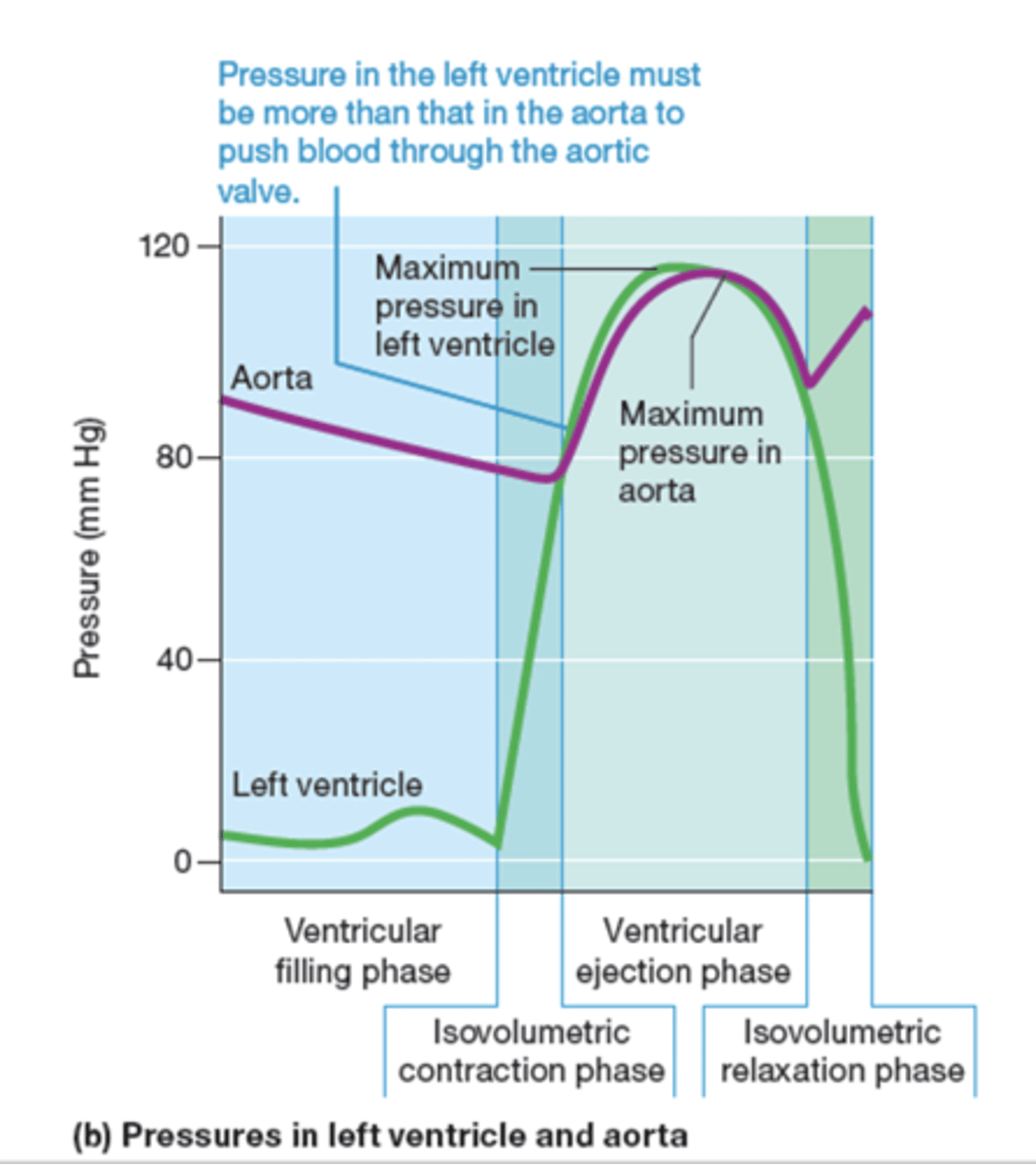BIO224: 17.4 Mechanical Physiology of the Heart: The Cardiac Cycle
1/45
There's no tags or description
Looks like no tags are added yet.
Name | Mastery | Learn | Test | Matching | Spaced |
|---|
No study sessions yet.
46 Terms
What is Mechanical physiology?
actual processes by which blood fills cardiac chambers and is pumped out of them
What is a heartbeat?
Cardiac muscle cells contract as unit to produce one coordinated contraction
How are the muscle cells arranged for a heartbeat?
spiral pattern; producing "wringing" action in heart when it contracts
What are pressure changes in the heart caused by?
contractions
What is the function of contractions?
function to drive blood flow through heart
What do valves prevent?
backflow
Cardiac cycle
sequence of events within heart from one heartbeat to next
What does high pressure in the ventricle cause? (2)
1.) blood flow that pushes the aortic valve open
2.) pushes blood up to the mitral valve to close
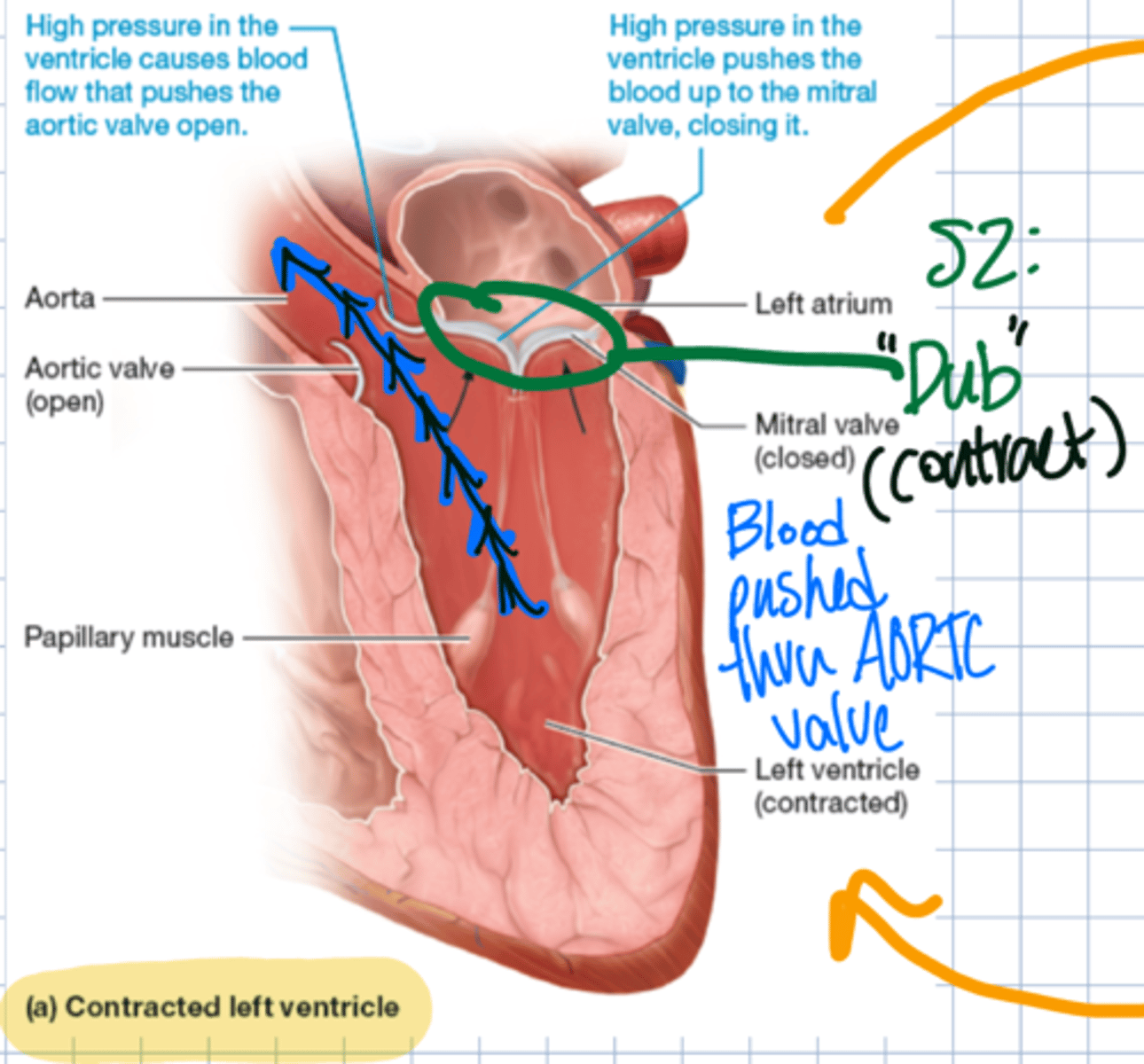
What does pressure from the blood flowing backward in the aorta cause?
closed aortic valve
What does pressure from the blood in the left atrium cause?
pushes the mitral valve open; allows blood in left atrium to brain into relaxed ventricle
What are the two heart sounds?
S1; lub and S2; dub
What occurs during S1?
lub; AV valves close
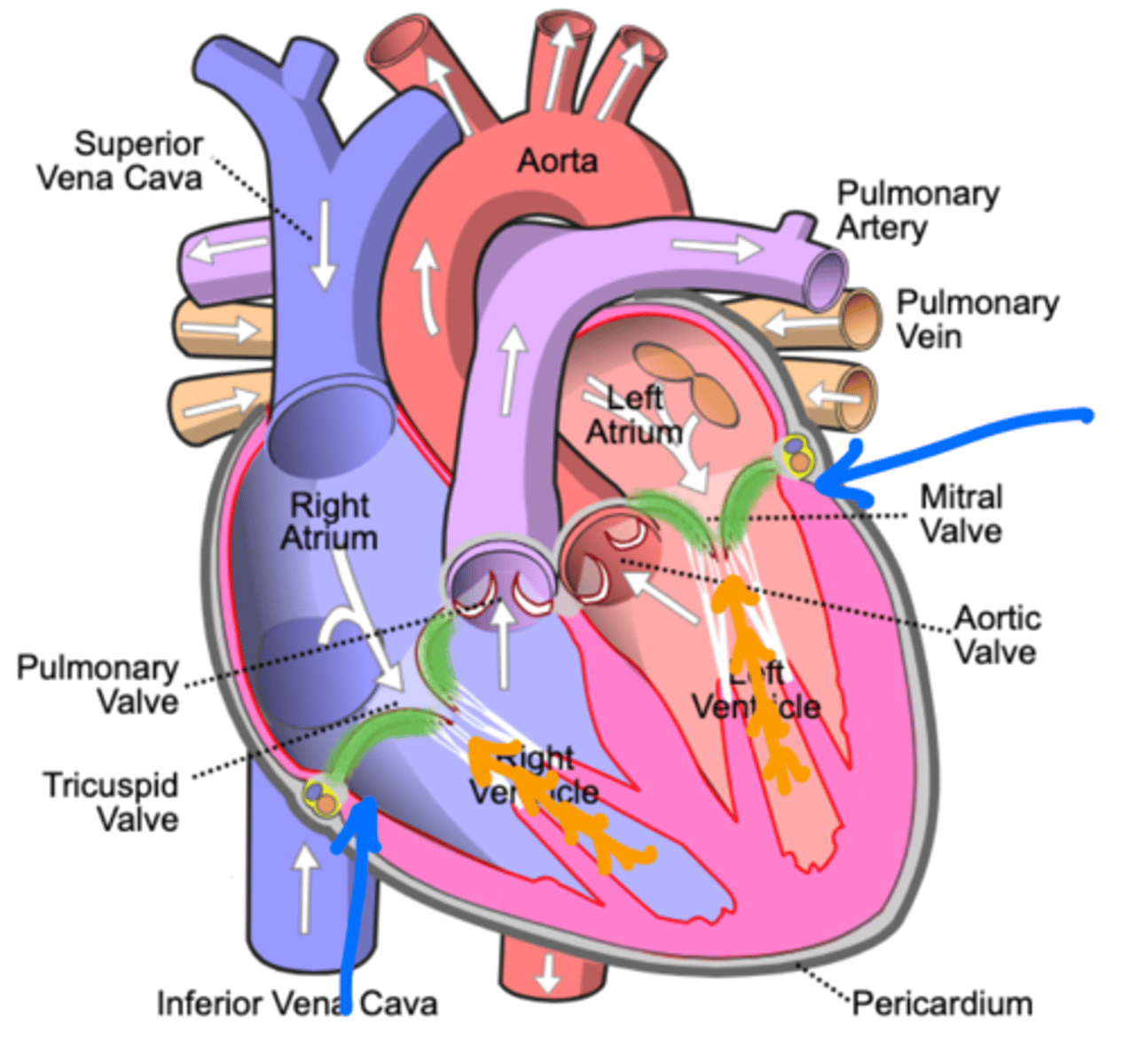
What are the AV valves?
"atrioventricular valves"; tricuspid valve and mitral/bicuspid valve
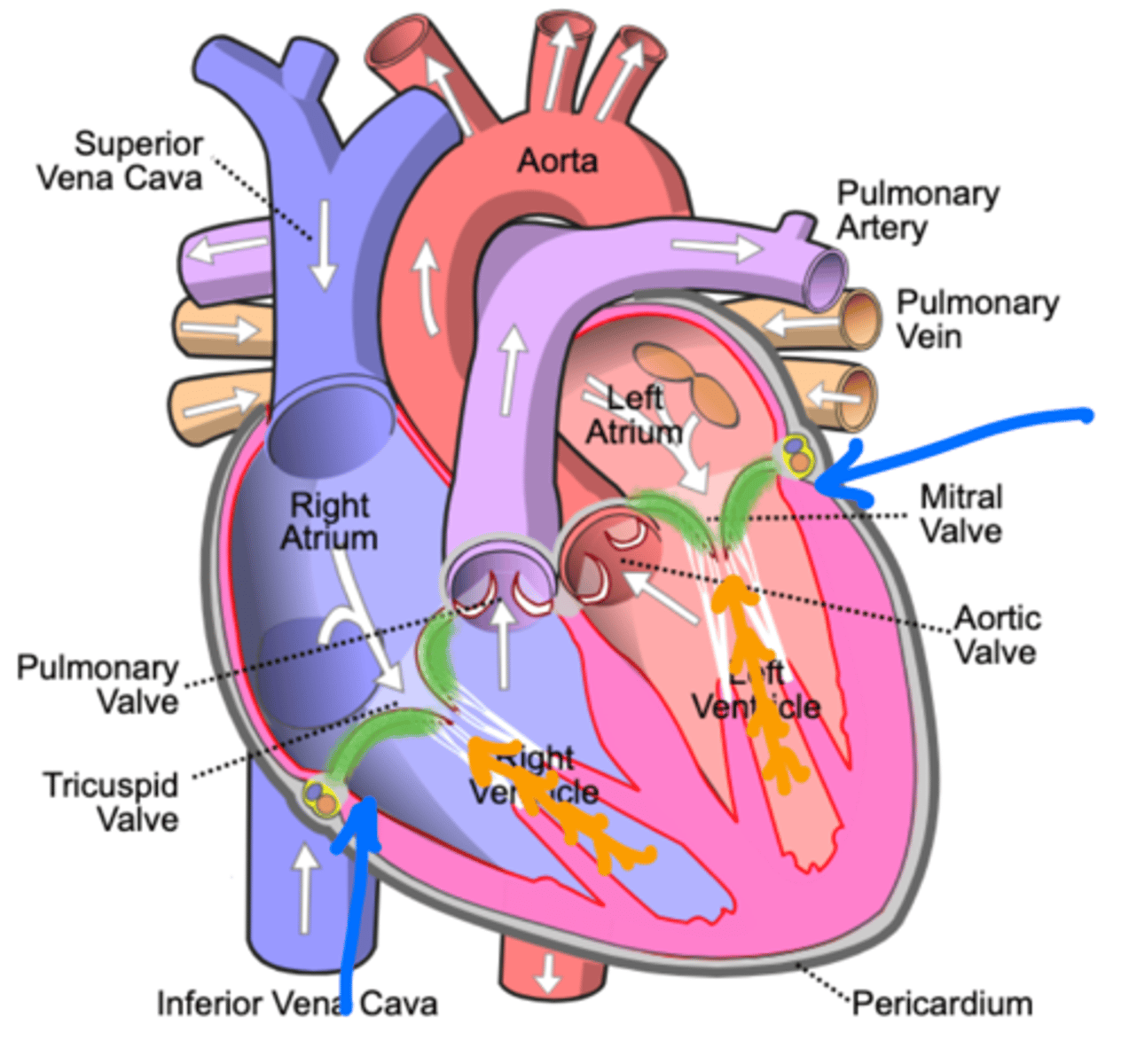
What occurs during S2?
dub; semilunar valves close
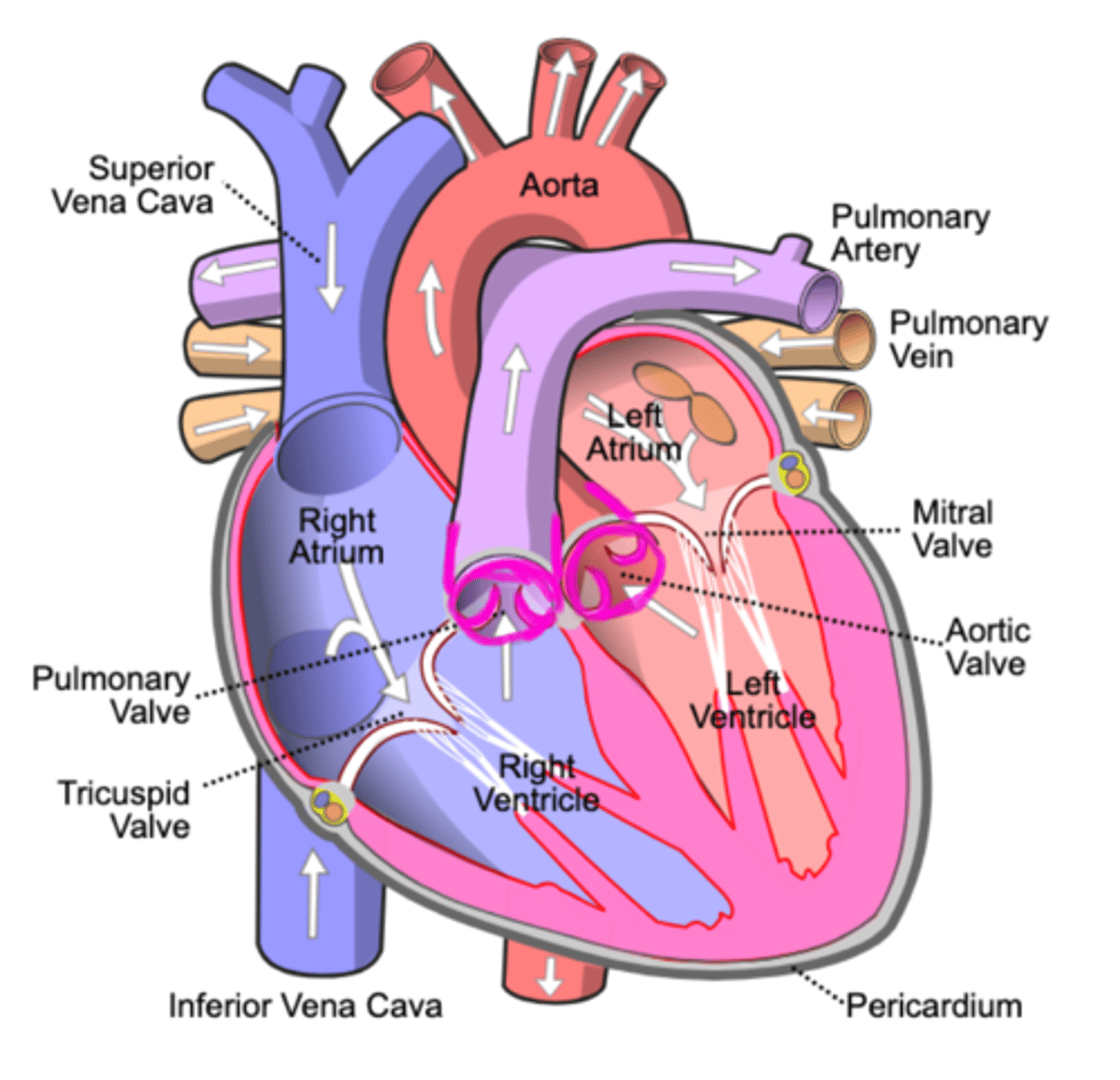
What are the semilunar valves?
pulmonary and aortic
When and where is the aortic sound?
second intercostal space; right sternal border.
During S2
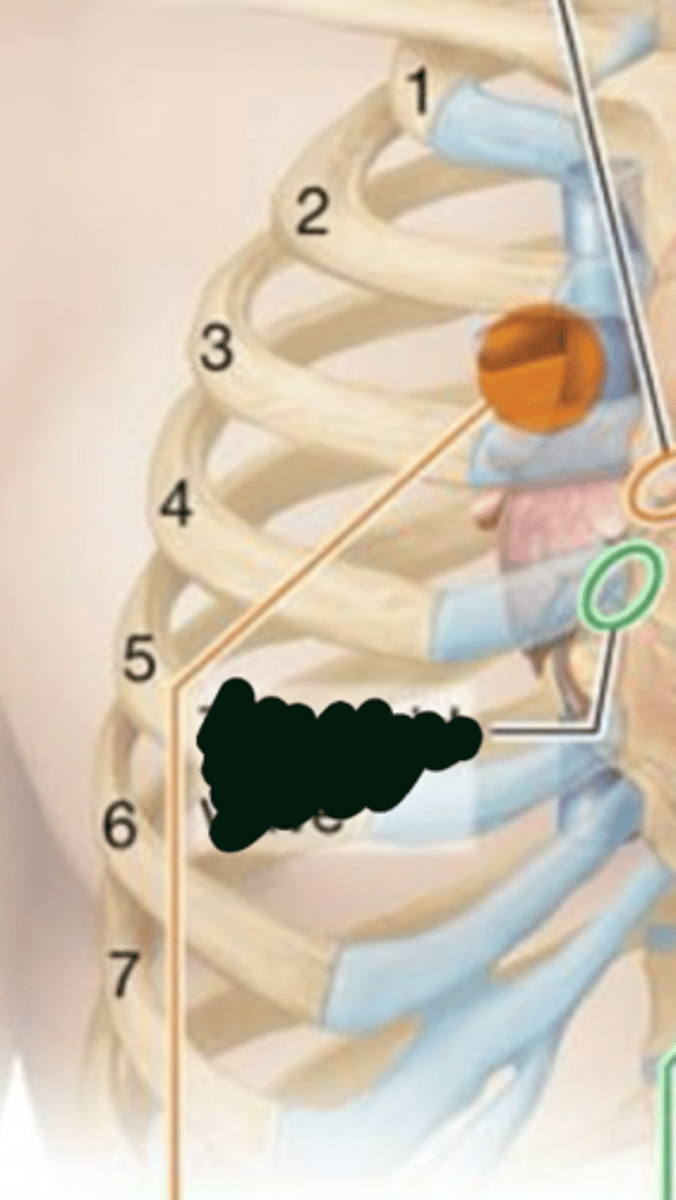
When and where is the tricuspid sound?
Fifth intercostal space; left sternal border.
During S1
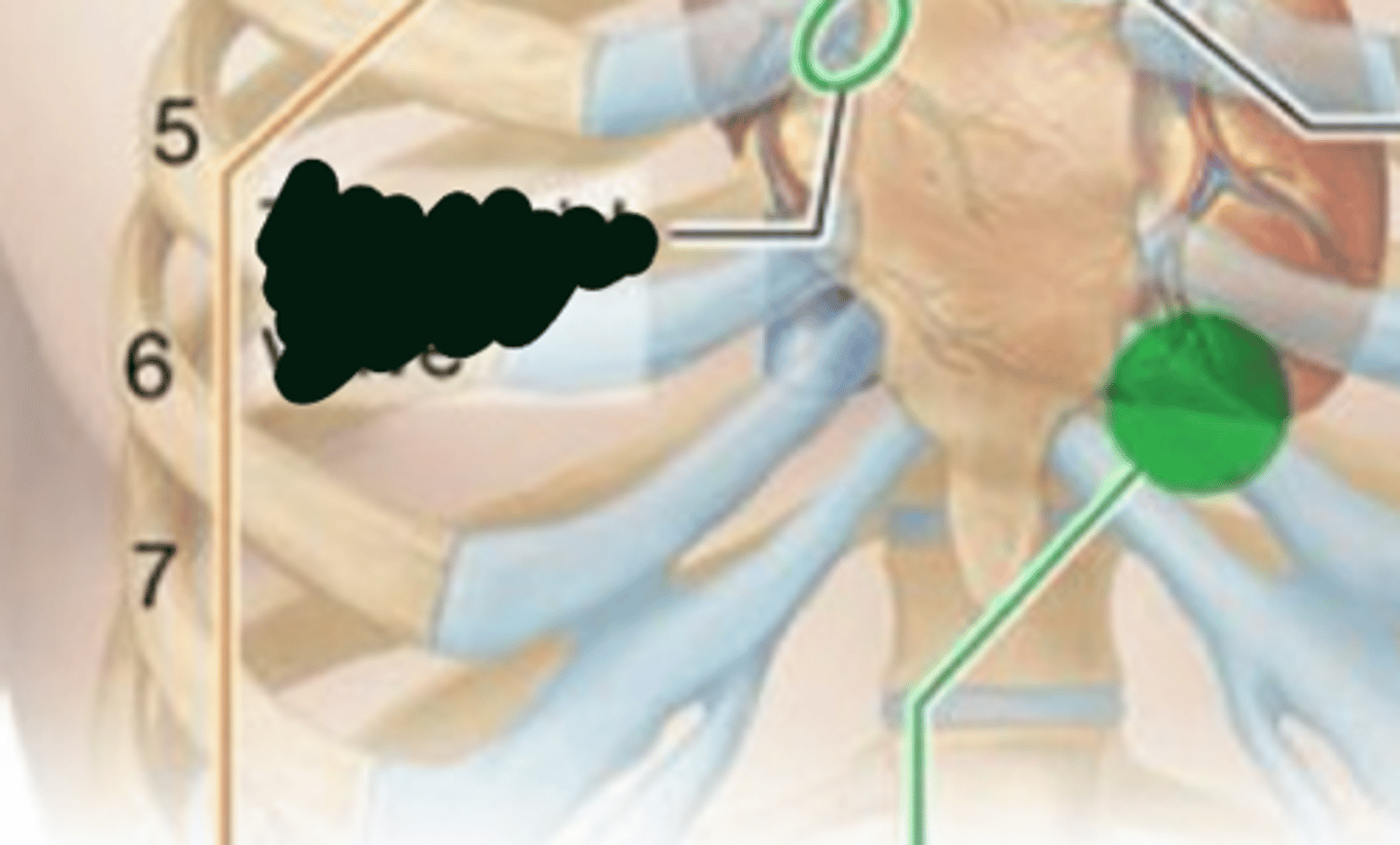
When and where is the mitral sound?
fifth intercostal space; midciavicular line. During S1
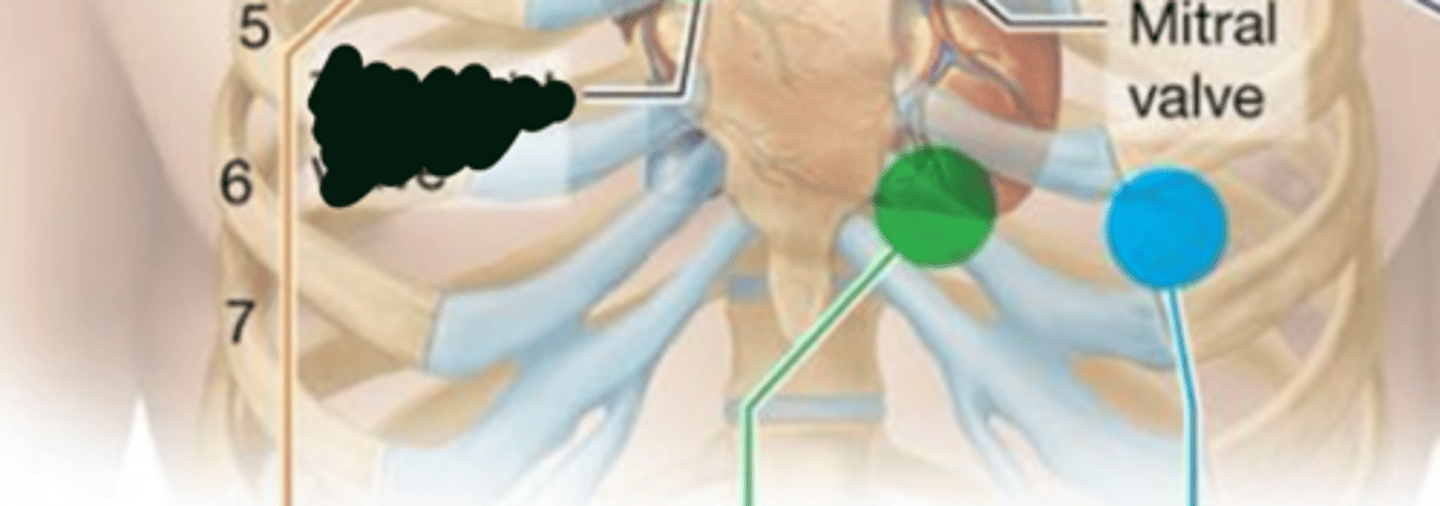
When and where is the pulmonary sound?
second intercostal space; left sternal border. During S2
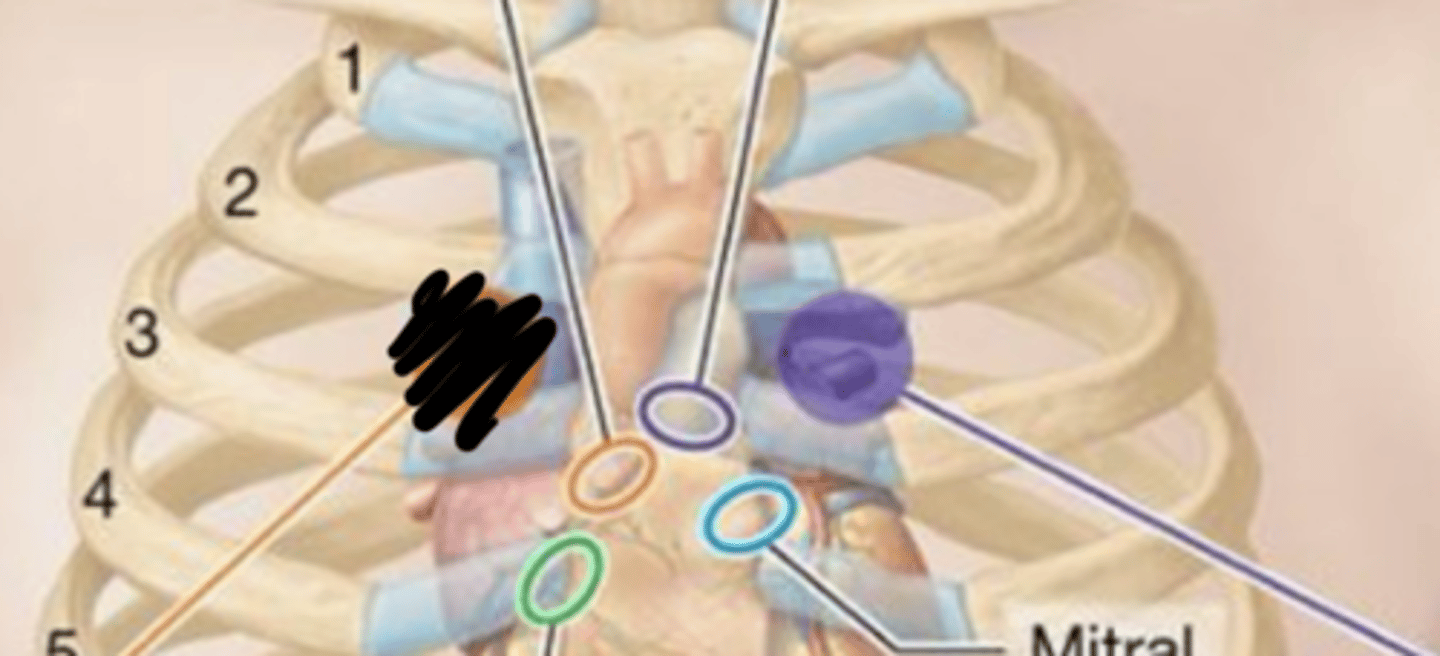
How many periods of relaxation is in each cardiac cycle?
one
What is SYSTOLE?
contraction
What is DIASTOLE?
relaxation
When do Atrial and ventricular diastoles and systoles occur?
different times as result of AV node delay
Where both sides of the heart pump blood? When?
into their respective circuits simultaneously
What are the four main phases of cardiac cycle?
1.) FILLING
2.) CONTRACTION
3.) EJECTION
4.) RELAXATION
How are the four main phases of the cardiac cycle defined?
defined by ACTIONS of ventricles and POSITIONS of valves
What occurs during ventricular filling phase?
ventricles fill with blood and are in diastole, atrioventricular valves are open, atrial systole occur, semilunar valves closed
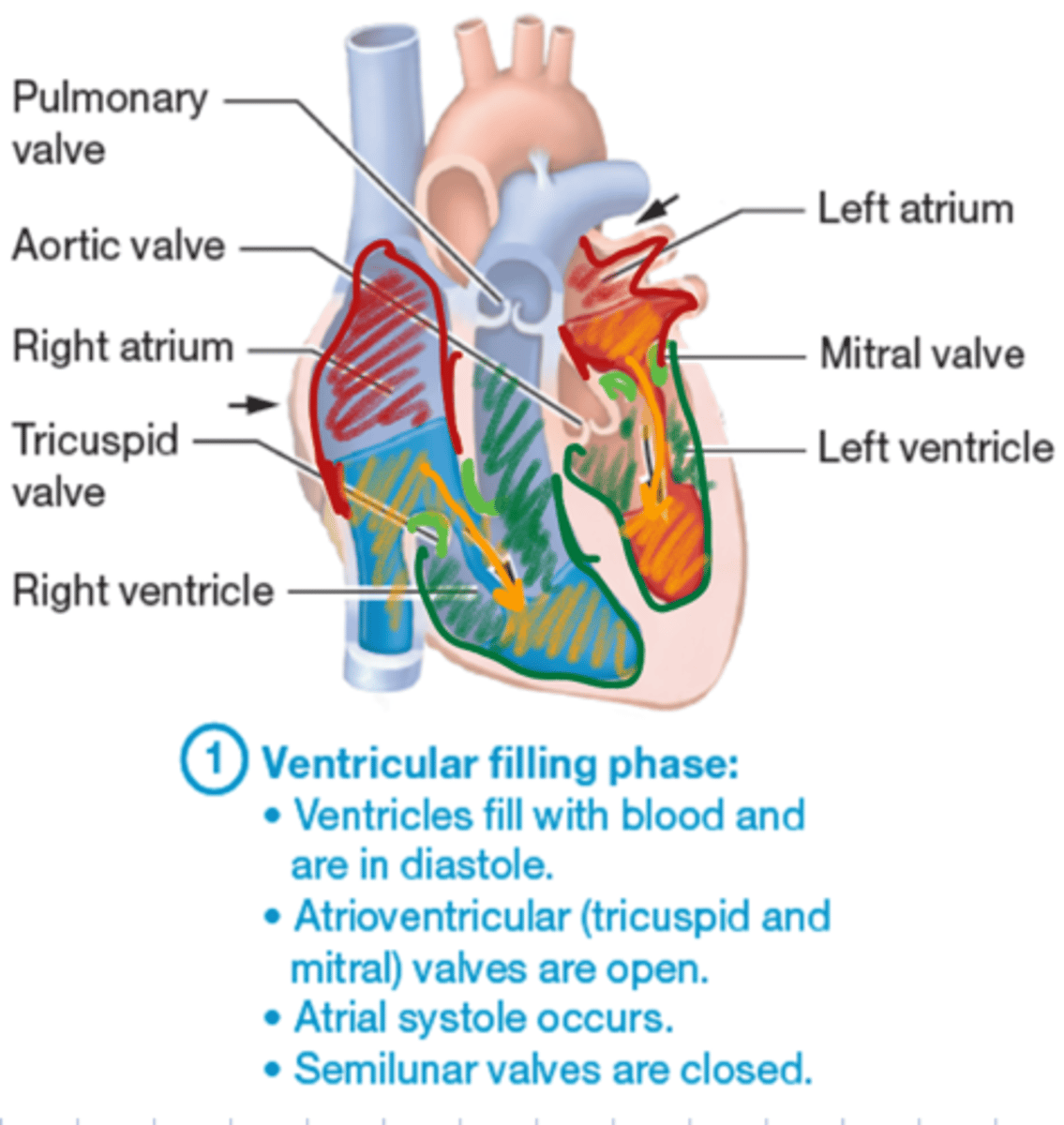
How is the pressure during ventricular filling phase?
Pressures in left and right ventricles are lower than in atria, pulmonary trunk, and aorta
Why do the atrioventricular valves open?
because Nearly 80% of total blood volume of atria drains passively in this manner into ventricles
What occurs at the end of atrial systole?
ventricle contains about 120 ml of blood; ends diastolic volume
What occurs during the isovolumetric contraction phase
ventricular systole begins, AV and semilunar valve close when enough pressure builds in ventricles, atrial diastole begins
Why does the pressure in the ventricles rise?
ventricles begin to contract
When the beginning of ventricular systole?
ISOVOLUMETRIC CONTRACTION
What does high pressure during ISOVOLUMETRIC CONTRACTION cause?
high pressure closes AV valves and causes S1 heart sound
Is ventricular pressure high enough?
not yet high enough to push open semilunar valves; ventricular volume does not change
What occurs during the ventricular ejection phase?
-ventricular systole continues
-AV valves are still closed
-atrial diastole continues
-pressure opens SL valves, and blood is ejected into the pulmonary artery and aorta
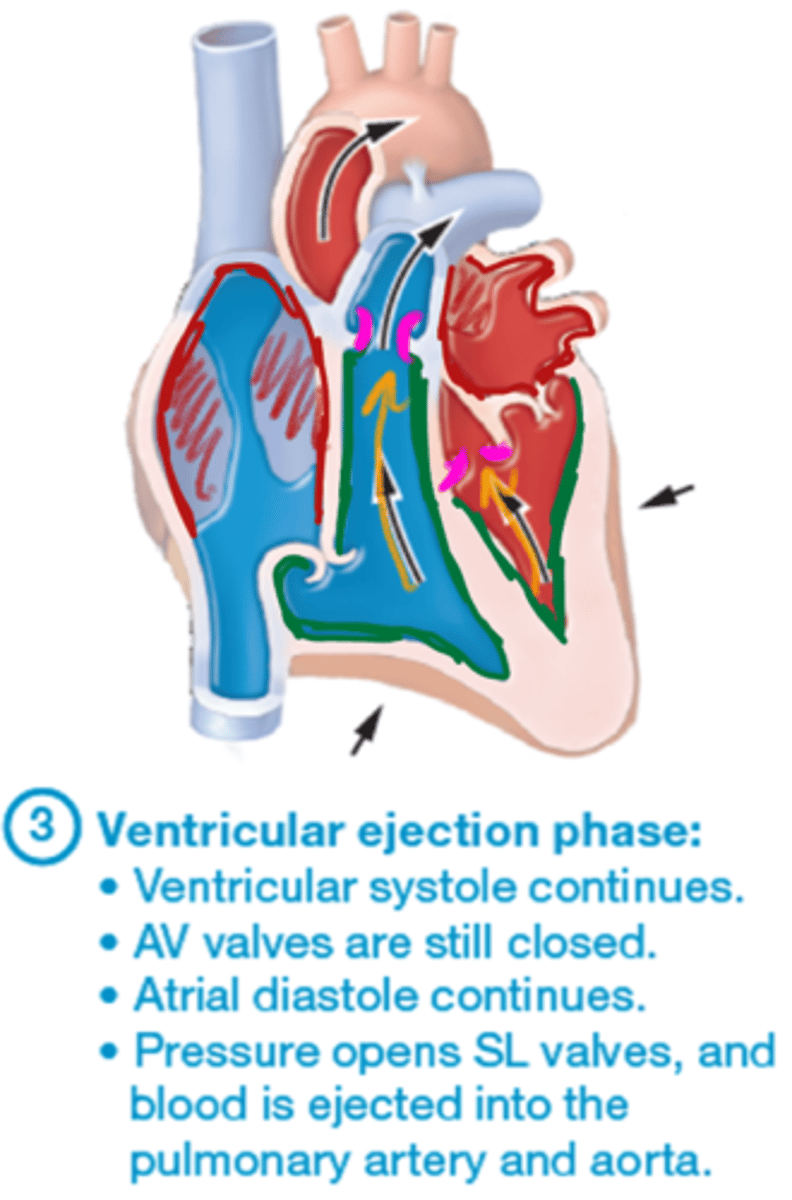
Do semilunar valves open or close during VENTRICULAR EJECTION PHASE?
open; rapid outflow of blood from ventricles occurs
How does the ejection of blood change during VENTRICULAR EJECTION PHASE?
ejection of blood into vessels decreases considerably
During VENTRICULAR EJECTION PHASE, how much blood is pumped into each ventricle? How much remains?
70ml pumped; 50ml remained
When does systolic volume end?
VENTRICULAR EJECTION PHASE
What occurs during isovolumetric relaxation?
- ventricular diastole begins
- AV valves remain closed
- atrial diastole continues
- SL valve close
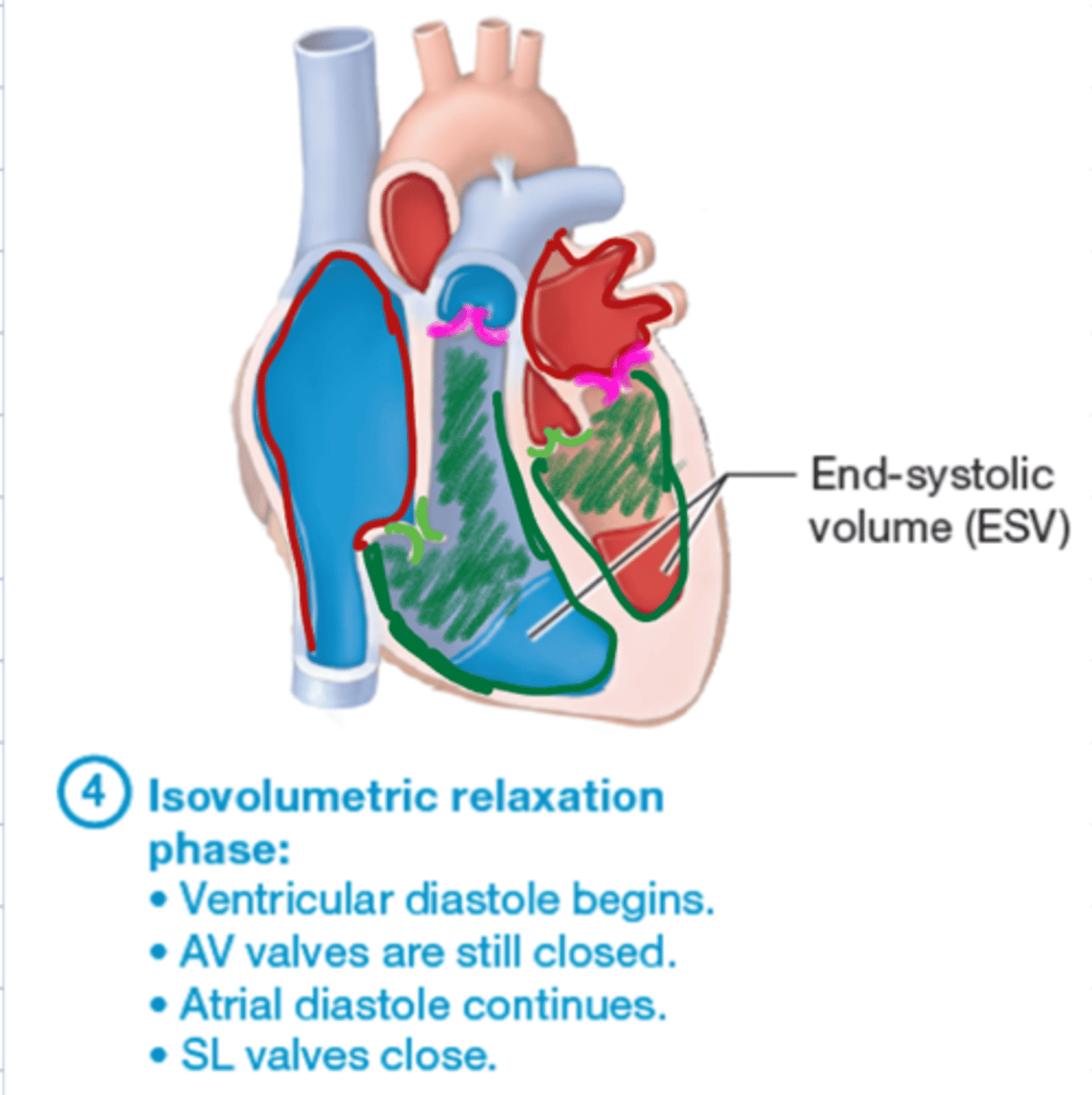
During ISOVOLUMETRIC RELAXATION, what happens to the semilunar valves?
Semilunar valves snap shut; S2 heart sound is heard
During ISOVOLUMETRIC RELAXATION, what happens to the AV valves?
AV valves remain closed
During ISOVOLUMETRIC RELAXATION, is blood rejected or entering from ventricles?
Blood is neither being ejected from nor entering into ventricles; volume briefly remains constant
Why is the pressure in the right ventricle important?
right ventricle pressure must be more than pulmonary trunk to push blood through pulmonary valve
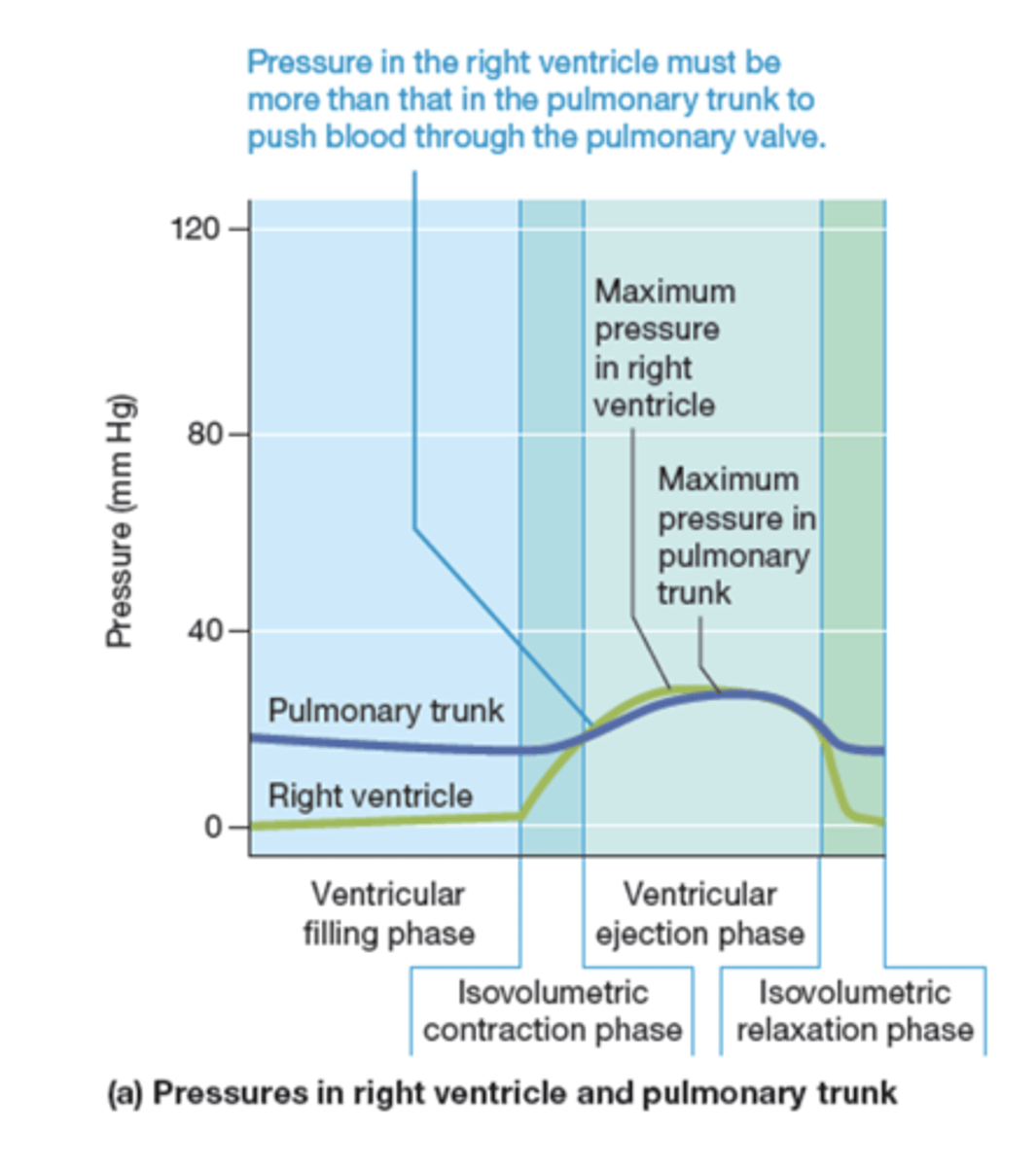
Why is the pressure in the left ventricle important?
left ventricle pressure must be more than aorta to push blood through aortic valve
